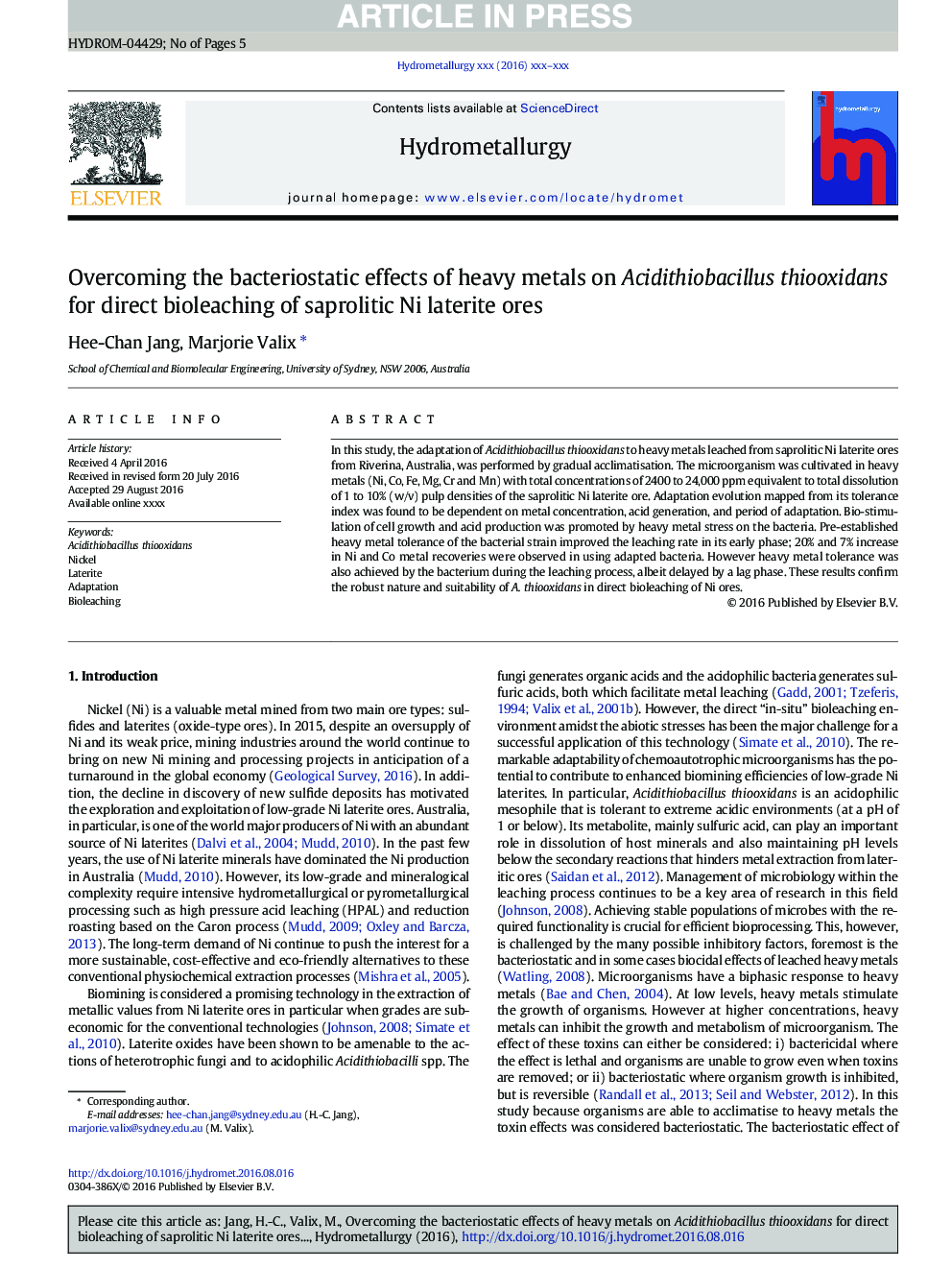| Article ID | Journal | Published Year | Pages | File Type |
|---|---|---|---|---|
| 4769077 | Hydrometallurgy | 2017 | 5 Pages |
Abstract
In this study, the adaptation of Acidithiobacillus thiooxidans to heavy metals leached from saprolitic Ni laterite ores from Riverina, Australia, was performed by gradual acclimatisation. The microorganism was cultivated in heavy metals (Ni, Co, Fe, Mg, Cr and Mn) with total concentrations of 2400 to 24,000Â ppm equivalent to total dissolution of 1 to 10% (w/v) pulp densities of the saprolitic Ni laterite ore. Adaptation evolution mapped from its tolerance index was found to be dependent on metal concentration, acid generation, and period of adaptation. Bio-stimulation of cell growth and acid production was promoted by heavy metal stress on the bacteria. Pre-established heavy metal tolerance of the bacterial strain improved the leaching rate in its early phase; 20% and 7% increase in Ni and Co metal recoveries were observed in using adapted bacteria. However heavy metal tolerance was also achieved by the bacterium during the leaching process, albeit delayed by a lag phase. These results confirm the robust nature and suitability of A. thiooxidans in direct bioleaching of Ni ores.
Related Topics
Physical Sciences and Engineering
Chemical Engineering
Chemical Engineering (General)
Authors
Hee-Chan Jang, Marjorie Valix,
